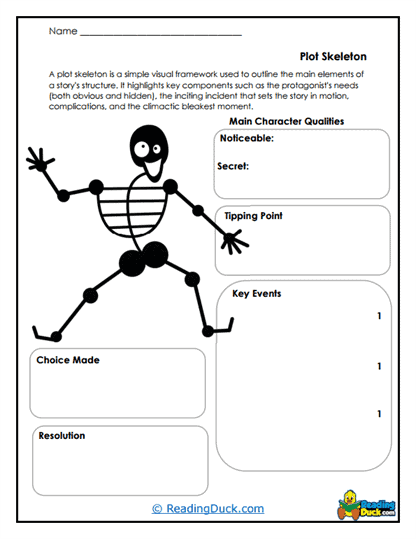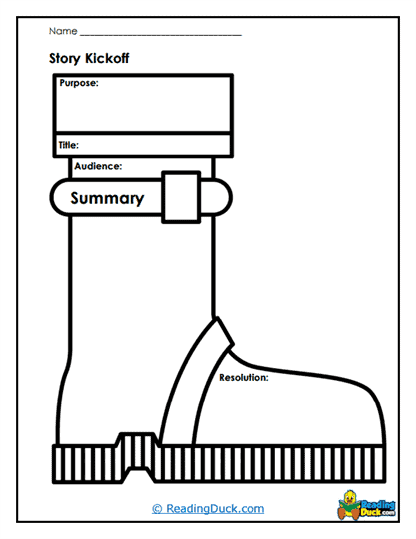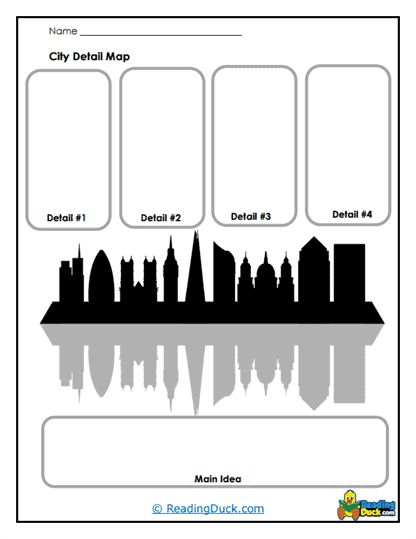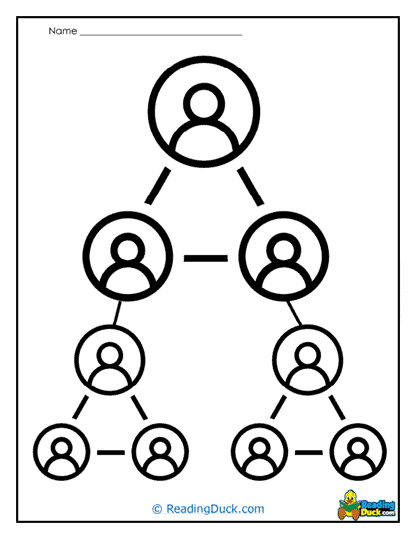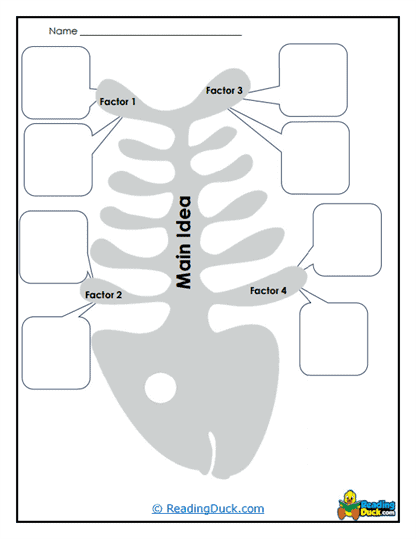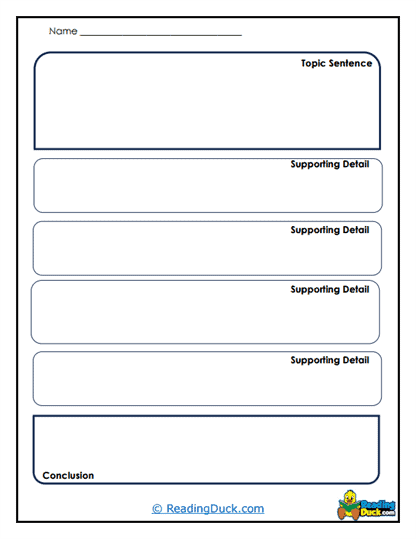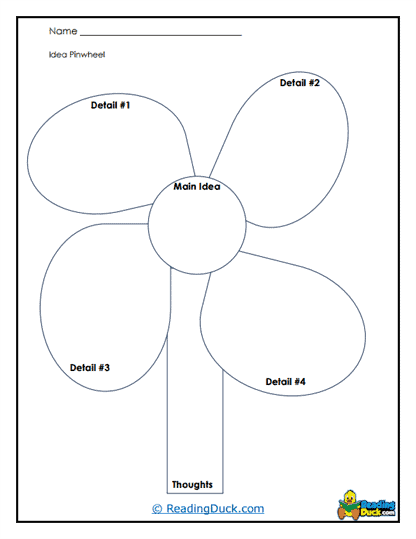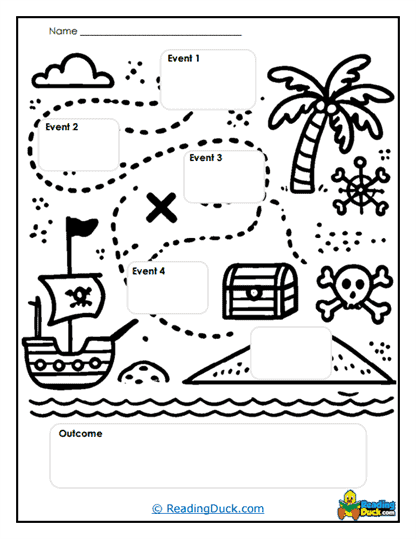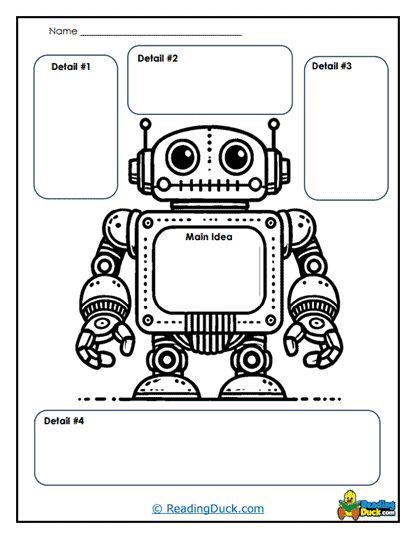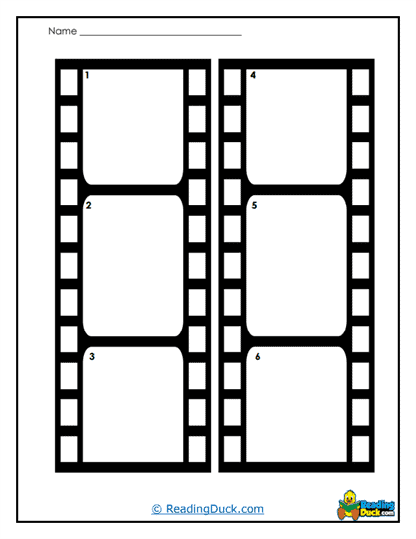Writing Graphic Organizers Worksheets
About Our Writing Graphic Organizers
Writing graphic organizers are visual tools designed to help writers organize their thoughts, ideas, and structure before and during the process of writing. These tools act as frameworks that facilitate brainstorming, planning, and the logical arrangement of information. They are widely used in education and by writers of all levels to make writing tasks clearer, more structured, and more effective. These graphic organizers can be a game changer when you are writing many different things:
Idea Generation
Writing graphic organizers are invaluable tools for brainstorming because they help writers explore a wide range of topics, subtopics, and specific points in an organized manner. Instead of relying solely on a stream-of-consciousness approach, graphic organizers provide a structured way to record and visualize initial thoughts. They enable writers to see connections between ideas, often sparking new insights or directions for their work. By providing a systematic space for jotting down thoughts, these tools encourage creativity while simultaneously preventing ideas from being overlooked. As a result, writers can build a comprehensive foundation of ideas to develop their projects with greater confidence.
Organization
The organization of ideas is one of the core purposes of a graphic organizer, helping writers create a logical and coherent structure for their work. Without proper organization, even the most brilliant ideas can come across as confusing or fragmented. Graphic organizers act as a roadmap, ensuring that ideas are sequenced in a way that flows naturally for the reader. They also help writers identify any gaps or redundancies in their arguments, allowing them to refine their structure before diving into the actual writing. Ultimately, this focus on organization ensures that the final piece is clear, persuasive, and engaging from start to finish.
Visualization
For many writers, seeing their ideas represented visually makes a significant difference in understanding the relationships between different components of their work. Graphic organizers provide a bird's-eye view of the writing, showing how topics, subtopics, and details connect. This visual representation can reveal patterns, hierarchies, and logical progressions that might not be as apparent in a linear outline or list. Additionally, the visual layout can make it easier for writers to prioritize key points and ensure that supporting details align with their main ideas. This ability to "see" the structure before writing improves both efficiency and effectiveness in crafting the final piece.
Focus
Staying focused is one of the greatest challenges in writing, especially for complex or lengthy pieces. A graphic organizer helps writers stay on track by outlining the essential components of their task, serving as a reference point throughout the process. By breaking down the writing into smaller, manageable sections, writers can maintain a clear sense of purpose and avoid going off on tangents. Moreover, the visual layout acts as a constant reminder of the goals and direction of the writing, ensuring that each paragraph or section contributes meaningfully to the overall message. This increased focus not only saves time but also results in a more polished final product.
Clarity
One of the most significant benefits of graphic organizers is the clarity they bring to the writing process, particularly for detailed or complex projects. Writers often struggle with how to organize a large amount of information in a coherent way. Graphic organizers simplify this by visually separating different elements and showing how they fit together. This clarity can be especially helpful for students or beginners who might feel overwhelmed by the scope of a writing task. By reducing the cognitive load associated with planning and structuring, graphic organizers enable writers to focus more on the content and quality of their ideas.
Efficiency
Using graphic organizers in the planning phase can dramatically increase efficiency, saving time and effort in the long run. By laying out ideas and structure early on, writers can avoid the common pitfalls of disorganization and misalignment in their drafts. This streamlined planning process also reduces the need for extensive revisions later, as the initial structure is more likely to be sound. Additionally, having a clear plan in place allows writers to work more quickly and with greater confidence, knowing exactly what they need to accomplish in each section. In this way, graphic organizers serve as a powerful tool for both time management and productivity in writing.
Key Features
Visual Layouts
Graphic organizers typically use boxes, bubbles, arrows, and other visual markers to show the relationships between ideas. This visual structure helps writers see how main ideas branch into subtopics and how those subtopics connect back to the overall theme. The use of arrows, for example, can indicate cause-and-effect relationships or logical progressions, while boxes and bubbles help to isolate distinct concepts. These layouts are especially useful for writers who think non-linearly or need to experiment with different ways of presenting their ideas. By making abstract concepts more concrete, the visual layouts foster a deeper understanding of the material being written.
Customizable Frameworks
One of the greatest strengths of graphic organizers is their adaptability to various types of writing. Whether a writer is working on an essay, a creative story, a research report, or a persuasive piece, there are graphic organizer formats designed to suit each purpose. For instance, a story writer might use a plot diagram, while a student writing an argumentative essay might rely on a T-chart to compare opposing viewpoints. This flexibility ensures that writers can tailor the tool to their specific needs, making it a versatile addition to any writing process. Customizable frameworks also encourage writers to develop their own unique approaches to planning and organizing their work.
Guided Prompts
Many graphic organizers include guided prompts or questions designed to help writers think critically about what to include. These prompts might ask writers to identify their thesis statement, main points, supporting evidence, or conclusions, depending on the type of writing being planned. By providing these cues, the organizers help writers address all the necessary components of their work, leaving less room for oversight. These guided prompts are particularly beneficial for inexperienced writers, offering a structured way to approach even the most daunting writing tasks. Over time, they also help writers develop the habits of thorough planning and critical thinking.
How Do These Organizers Help Students?
Cater to Different Learning Styles
Graphic organizers are versatile tools that cater to a variety of learning styles, making them accessible to a wide audience. Visual learners, for example, benefit greatly from seeing relationships and hierarchies represented graphically, which helps them process information more effectively. Logical learners, on the other hand, appreciate the structured and step-by-step nature of graphic organizers, as it aligns with their preference for order and reasoning. This inclusivity ensures that writers of all types can find value in using these tools, making the writing process more engaging and intuitive. By accommodating diverse learning preferences, graphic organizers encourage more people to embrace writing with confidence and creativity.
Boost Confidence
Writing can be an intimidating task, especially for those who struggle with where to begin or how to proceed. Graphic organizers break the process into manageable parts, allowing writers to focus on one element at a time. This incremental approach makes the task feel less overwhelming, boosting confidence as each section is completed. Additionally, having a clear plan in place gives writers the assurance that they are on the right track, reducing anxiety and uncertainty. As a result, graphic organizers empower writers to approach their projects with a positive mindset and greater self-assurance.
Improve Quality
The use of graphic organizers leads to higher-quality writing by ensuring that ideas are well-organized and fully developed. A clear structure allows writers to present their arguments or narratives more coherently, making the final piece easier for readers to follow and understand. By organizing their thoughts visually, writers can also identify and resolve weaknesses, such as unsupported claims or illogical progressions, before they appear in the draft. This proactive approach to planning ultimately results in writing that is more polished, impactful, and persuasive, reflecting the writer's intent with greater precision.
Enhance Critical Thinking
Graphic organizers encourage writers to engage in deeper levels of critical thinking by analyzing, synthesizing, and evaluating their ideas during the planning phase. For example, writers might use a Venn diagram to compare and contrast different perspectives or a cause-and-effect chart to explore the implications of their arguments. This process helps writers develop a more nuanced understanding of their topics and ensures that their work is thoughtful and well-reasoned. By fostering critical thinking, graphic organizers not only improve the quality of individual pieces but also help writers build skills that are valuable across all forms of communication.
Aid in Revision
A graphic organizer serves as a valuable reference point during the revision process, helping writers ensure that all planned elements have been included. By comparing their draft to the original organizer, writers can quickly identify areas where they may have deviated from their plan or overlooked important details. This makes the revision process more efficient and focused, as the organizer provides a clear blueprint for what the final piece should accomplish. Furthermore, having a visual representation of their ideas helps writers evaluate whether their work aligns with their initial goals, making it easier to refine and strengthen their writing.
